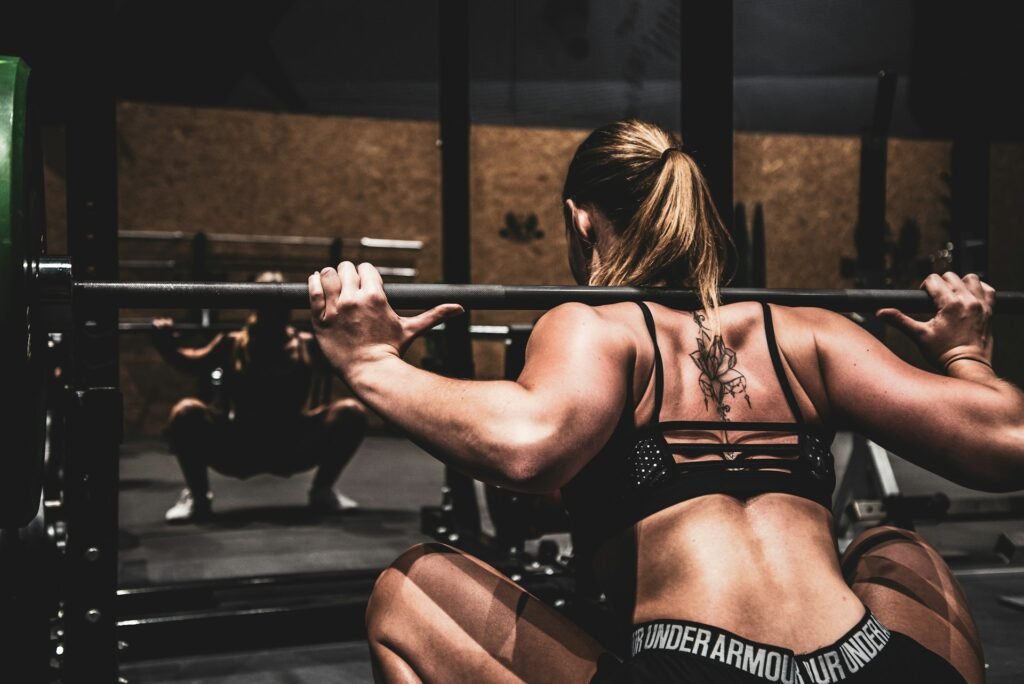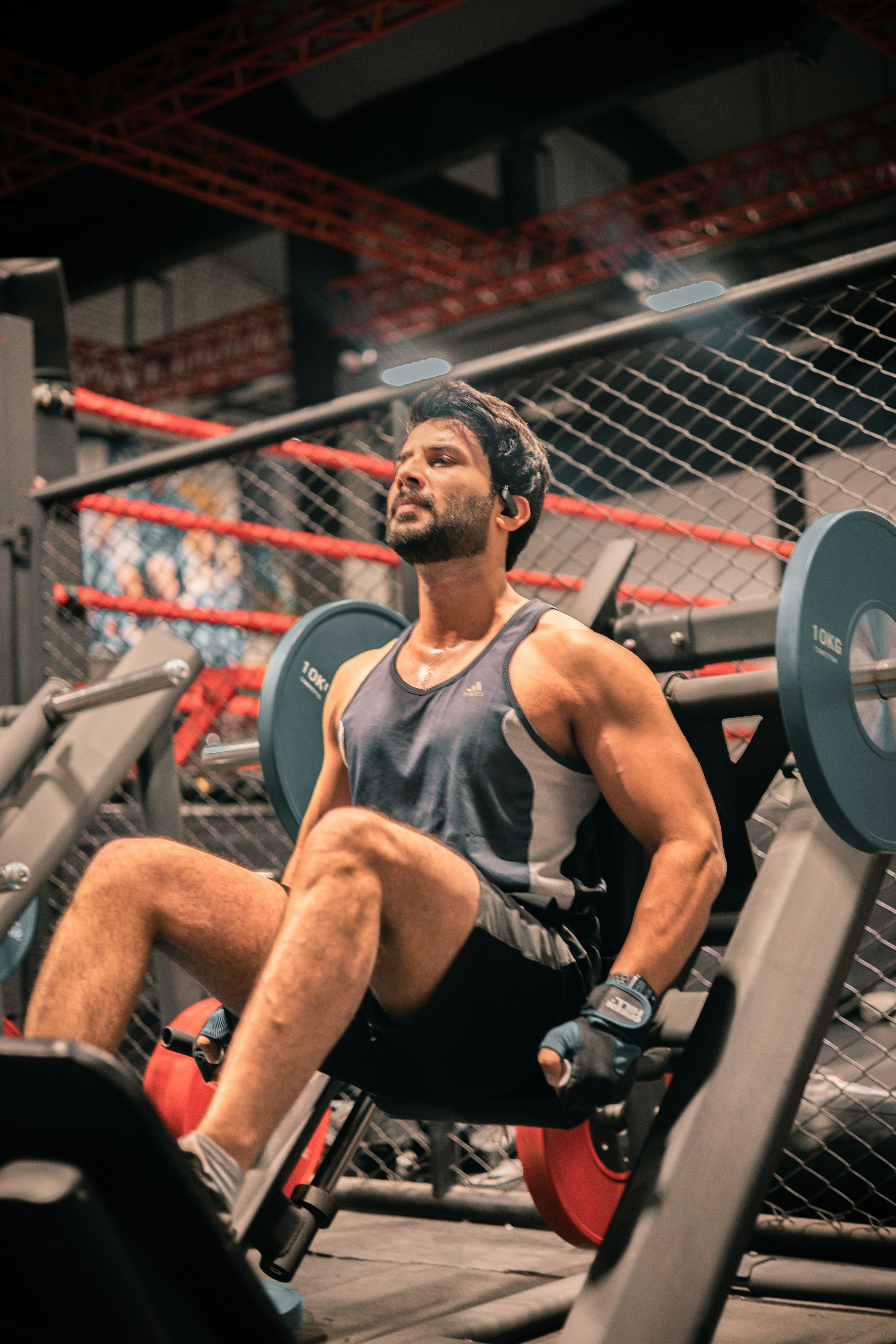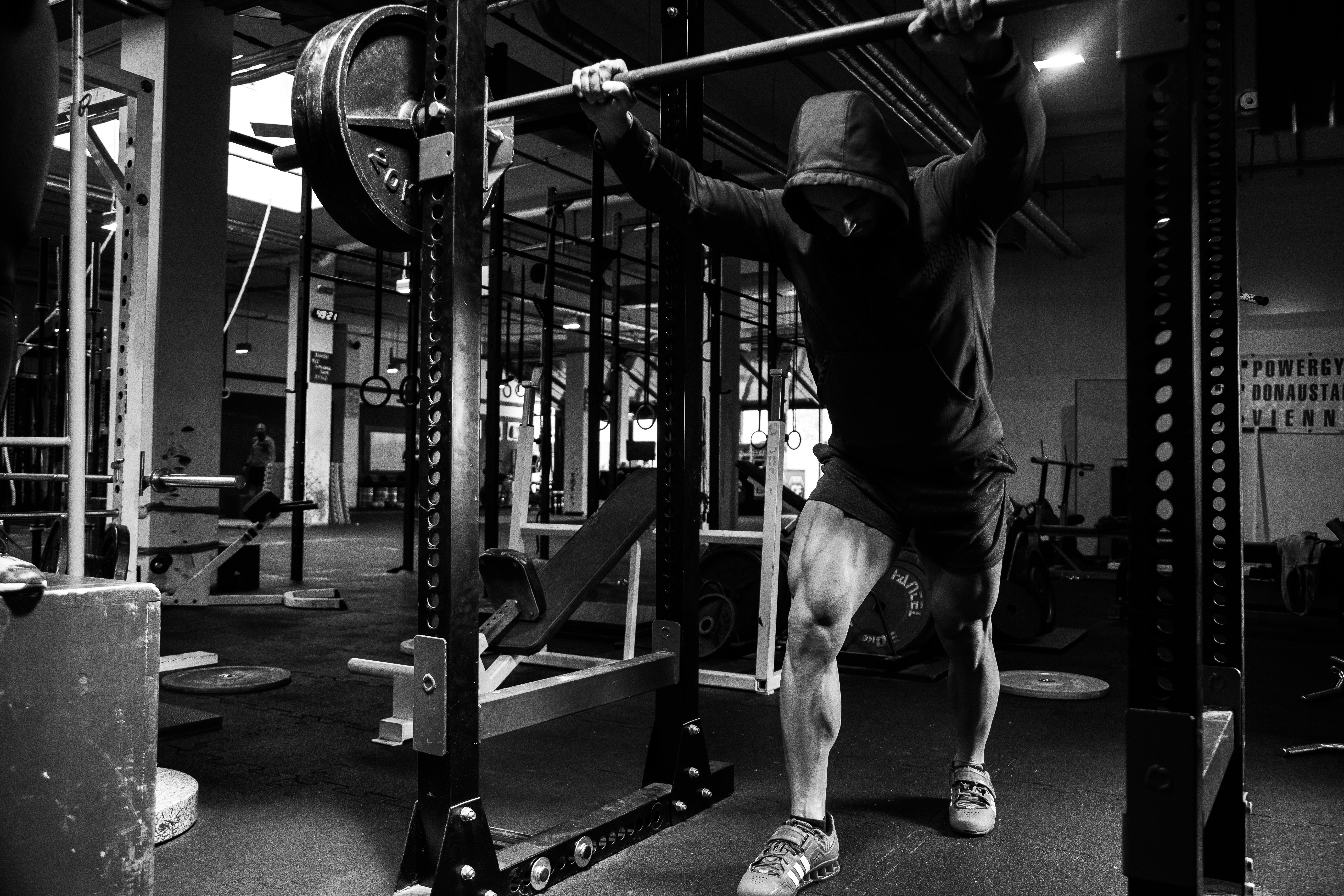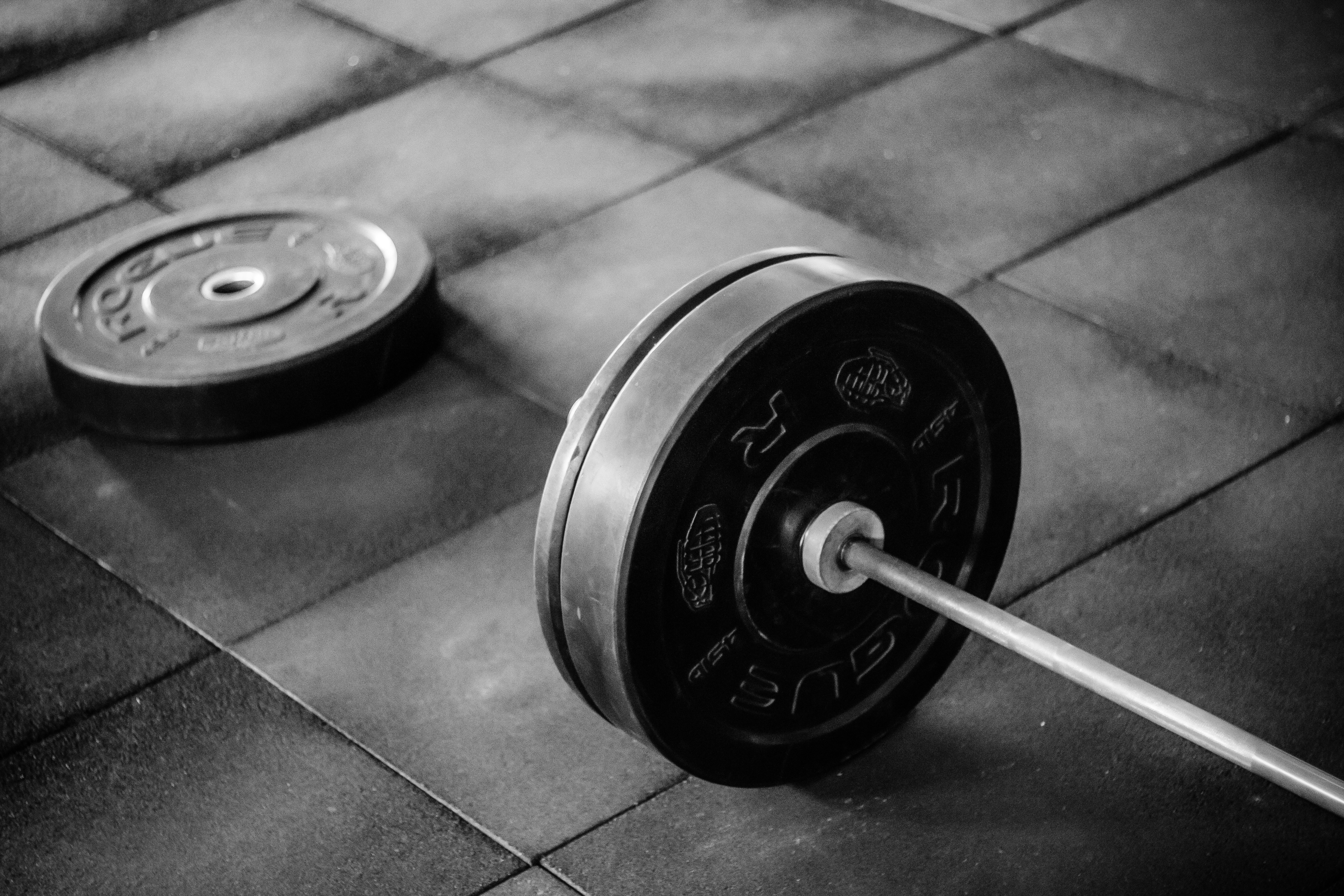
Photo by Sven Mieke on Unsplash
Squats are fundamental exercises in strength training routines, and two popular variations are the hack squat and barbell squat. Each has its unique benefits and can be tailored to fit different fitness goals.
Hack squats are typically performed using a hack squat machine, which helps guide the movement and reduce the risk of improper form. This exercise primarily targets the quadriceps but also engages the glutes and hamstrings to a lesser extent. According to research, the controlled environment of the hack squat machine can result in lower injury risks.
On the other hand, barbell squats are a cornerstone of functional strength training. Performed with a barbell across the upper back, they require more balance and engage a broader range of muscle groups, including the core, lower back, and shoulders. Studies show that barbell squats can lead to greater overall muscle activation and strength gains due to the need for stabilizing muscles ^1^.
A 2020 survey by the National Strength and Conditioning Association found that nearly 75% of competitive athletes regularly include barbell squats in their training programs, highlighting their effectiveness in building functional strength.
For more detailed comparisons and benefits of various exercises, you can check out our article on dumbbell vs barbell bench press.
How to Perform a Hack Squat

Photo by Shan A. Rajpoot on Unsplash
Performing a hack squat involves using a specific machine that helps target your lower body muscles. Here’s a step-by-step guide to doing a hack squat correctly:
- Starting Position:
- Stand on the platform of the hack squat machine with your feet shoulder-width apart.
- Position your shoulders under the padded shoulder rests.
- Keep your back and hips pressed firmly against the backrest.
- Hold onto the handlebars at the sides for support.
- Lowering Phase:
- Inhale deeply.
- Bend your knees slowly and lower your body as if you are sitting down.
- Aim to lower your thighs until they are parallel or just below parallel with the platform. Ensure your knees don’t extend past your toes.
- Ascending Phase:
- Exhale as you press through your feet to straighten your legs.
- Return to the starting position with controlled movement.
Tips for Proper Form
- Foot Placement: Place your feet towards the top half of the platform. This helps to keep your knees aligned over your ankles, reducing knee strain.
- Range of Motion: Lower yourself as deep as possible to fully engage your muscles.
- Core Engagement: Keep your core muscles tight throughout the movement to maintain stability.
- Avoid Locking Knees: Do not fully lock your knees when returning to the standing position to avoid joint stress.
Benefits and Safety
Hack squats can be a safer alternative to barbell squats for beginners due to the machine’s support. They are also beneficial for those with limited ankle mobility, as the machine’s angled platform can reduce the demand on the ankles (Shape).
Related Reading: If you’re looking for a comprehensive leg workout, consider checking out our at home dumbbell leg workout for a variety of exercises that don’t require a machine.
How to Perform a Barbell Squat

Photo by Alexander Redl on Unsplash
Performing a barbell squat properly is essential for maximizing its benefits and minimizing injury risk. Here’s a step-by-step guide to help you get it right:
- Setup and Stance: Start by setting up the barbell in a squat rack at about shoulder height. Position yourself under the bar with the bar resting on your upper back, not your neck. Your feet should be roughly shoulder-width apart with your toes pointing slightly outward.
- Unrack the Bar: Take a deep breath, tighten your core, and lift the bar out of the rack by straightening your legs. Take two steps back to clear the rack.
- Starting Position: Keep your chest up, back straight, and eye gaze fixed on a point about two meters in front of you. Ensure your knees are slightly bent and your weight is distributed evenly on your feet.
- Descent: Begin the squat by pushing your hips back and bending your knees, as if you are sitting down into a chair. Your knees should stay in line with your toes throughout the movement. Lower yourself until your hip crease is just below your knee level.
- Ascent: Drive through your heels to push back up to the starting position. Keep your chest lifted and maintain a neutral spine. Exhale as you rise to help stabilize your core and regain balance.
- Form Tips:
- Knees and Toes Alignment: Ensure your knees follow the direction of your toes to prevent knee strain.
- Chest Position: Keep your chest up to avoid leaning too far forward, which can stress your lower back.
- Heels Down: Make sure your heels stay flat on the ground to maintain balance and provide a solid base for lifting.
Adding barbell squats to your workout routine can offer numerous benefits, including improved strength in the quads, hamstrings, and glutes.
Benefits of Hack Squats
Hack squats offer a range of benefits that make them a valuable addition to your exercise routine, particularly if you’re aiming to build lower body strength. One of the primary advantages is the emphasis on the quadriceps muscles. By focusing on the quads, hack squats help in developing strong, defined legs, which can enhance your overall athletic performance and improve the aesthetic appearance of your lower body.
In addition to targeting the quads, hack squats also engage the glutes, hamstrings, and calves. This makes them an effective compound exercise that works multiple muscle groups simultaneously, leading to better muscle balance and coordination. The design of the hack squat machine also provides stability, allowing you to focus on lifting heavier weights without worrying about maintaining balance. This can be particularly beneficial for beginners who might struggle with the form and stability required for traditional barbell squats.
Furthermore, hack squats are considered safer for those with lower back issues because the machine supports the back throughout the movement. According to a study published in the Journal of Strength and Conditioning Research, hack squats result in lower trunk muscle activation compared to traditional squats, which can reduce the risk of lower back injury when performed correctly (Clark et al., 2019) [source].
Moreover, hack squats can be a good alternative for people with knee concerns when performed with proper form and lighter weights initially. It’s always advisable to consult with a fitness professional or a physiotherapist to ensure correct execution and to avoid any potential strain on the knees.
For more information on how to incorporate exercises that complement hack squats into your routine, check out our article on barbell leg workouts.
Benefits of Barbell Squats
Barbell squats are highly effective for building lower body strength and muscle mass. They target a wide range of muscles, including the quadriceps, hamstrings, glutes, and calves. These big muscle groups enable you to lift more weight, which helps stimulate muscle growth. Studies have shown that squats can significantly increase quadriceps size and strength, even without heavy weights (BarBend, 2024).
Another benefit is the improvement in core strength. When performing squats, your core muscles, including the abs and lower back, are actively engaged to stabilize the body. This not only helps in building a stronger torso but also enhances overall stability and balance. Research supports that squats enhance your ability to produce power, which can translate to better performance in activities like sprinting and jumping (Hartmann et al., 2012).
Moreover, barbell squats contribute to improved mobility and flexibility. Regularly executing the squat motion helps in maintaining a good range of motion in your hips and knees. This mobile flexibility is crucial for daily activities and athletic performance.
Squats also have a significant impact on your metabolic rate, aiding in fat loss. Engaging multiple large muscle groups requires a lot of energy, which elevates the number of calories burned during and after exercise. Incorporating squats into a weight training routine can help maintain lean muscle mass even during periods of caloric deficit (Ballor et al., 1988).
Lastly, squats may assist in injury prevention by strengthening the ligaments, tendons, and muscles around your joints, particularly the knees and hips, providing enhanced joint stability and resilience against injuries.
If you’re interested in complementing your squats with effective cardio workouts, consider checking out our article on low-impact cardio for bad knees.
Comparing the Muscle Activation
Muscle activation is a critical factor to consider when comparing hack squats and barbell squats. Both exercises engage multiple muscle groups, but they do so in slightly different ways, which can affect your workout outcomes.
A study from the Journal of Sports Science & Medicine provides valuable insights into how muscle activation varies between different exercises. While the focus of the study was on the upper body, the principles can be applied to understand the differences in muscle activation during hack squats and barbell squats.
Barbell squats typically engage the quadriceps, hamstrings, glutes, lower back, and core muscles more dynamically. During a barbell squat, the barbell’s position on the back requires significant stabilization from the core and lower back. This means the erector spinae and other stabilizers are highly engaged throughout the movement. According to a 2018 study on muscle activation during squats, the quadriceps are highly engaged, with electromyographic (EMG) readings showing up to 80% activation of the muscle fibers during the lift NCBI.
In contrast, the hack squat focuses more on the quadriceps with less emphasis on the stabilizing muscles. The machine support reduces the need for balance and allows you to isolate the quadriceps more effectively. According to various EMG analyses, the hack squat can engage the quadriceps up to 65%, making it a great option if targeting those muscles specifically.
Both exercises have their unique benefits in terms of muscle engagement. For overall muscle engagement and functional strength, barbell squats might be preferable. However, if the goal is to focus on the quadriceps with less strain on the lower back, hack squats can be the better choice.
For a deeper understanding of how different exercises impact muscle groups, consider reading our detailed comparison on Barbell Squat vs Goblet Squat.
Choosing Between Hack Squat and Barbell Squat for Your Fitness Goals

Photo by Victor Freitas on Unsplash
When choosing between hack squat and barbell squat, it’s essential to consider your fitness goals.
Muscle Growth and Hypertrophy: If your primary goal is muscle growth, particularly targeting the quadriceps, the hack squat may be more beneficial. Hack squats offer greater isolation of the quads due to the machine’s design, reducing the engagement of stabilizing muscles. A study showed that hack squats could increase quadriceps activation by about 20% compared to barbell squats, making them a solid choice for bodybuilders source.
Strength and Power: On the other hand, if you’re focusing on overall strength and power, barbell squats are likely the better option. Barbell squats involve multiple muscle groups, including the core, glutes, hamstrings, and lower back, providing a comprehensive workout. They also mimic functional movement patterns, which are beneficial for sports and daily activities. Research indicates that barbell squats can improve overall leg strength by 15% more than hack squats source.
Safety and Equipment: Safety and available equipment should also be factors in your decision. The hack squat machine provides support, which can minimize the risk of injury by reducing the need for balance and stability, making it suitable for beginners or those with joint concerns. In contrast, barbell squats require a power rack and weight plates, and the lack of support can be challenging but rewarding for those looking to develop functional strength.
Overall Conditioning: If your goals are more general, such as improving overall conditioning and staying fit, you might find benefits in incorporating both exercises into your routine. Using different squat variations can prevent plateaus, keep workouts interesting, and ensure a balanced development of muscle groups.
For further reading on related topics, check out Barbell Leg Workout for more insights on barbell exercises tailored to strength building.